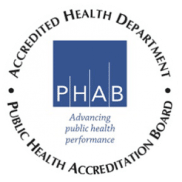What is CWD?
CWD is a central nervous system disease caused by prions (infectious proteins) that affect North American cervids (mule deer, white-tailed deer, elk, and moose). Prion proteins are found in the brains of normal, healthy animals. Researchers believe prion disease is caused by misfolding of normal prion proteins, which leads to brain damage.
CWD is similar to “mad cow disease” in cattle, scrapie in sheep, and Creutzfeldt-Jakob disease (CJD) in humans. It is fatal to animals, and there is no vaccine available. The protein that can cause CWD can pass directly from animal to animal and indirectly through the environment. Prions are found in saliva, feces, urine, blood, and decaying carcasses. Once in the environment, CWD prions may remain infectious for many years. Decaying infected carcasses and infected “gut piles” from hunters who field dress their deer where it is harvested have the potential to infect other animals if left in the field.
Is CWD Dangerous To Humans?
As a precaution, the CDC and Arkansas Department of Health recommend that people and other animals do not eat deer or elk that appear to have CWD. If the protein that can cause CWD could spread to people, the Centers for Disease Control and Prevention (CDC) reports it would most likely be through eating infected deer and elk, and it might cause a human illness similar to CWD, such as CJD. However, there is no strong evidence of that happening in people, and it is not known if people will get infected. Hunters must consider the level of risk they are willing to accept when deciding whether to eat meat from deer or elk from areas with CWD, and they should check state wildlife and public health guidance to see whether testing of animals is recommended or required in a given region.
Should I Take Precautions Even if an Animal Has No Evidence of CWD?
It can take a long time for animals exposed to CWD to show symptoms. Animals may appear normal for an extended period of time even though they are infected, and even normal-looking animals harvested in a CWD zone should be tested. While prions may be present in a variety of tissues and body fluids, including blood and muscle, they are most common in the brain, eyes, spinal cord, lymph nodes, tonsils, and spleen. Hunters should wear gloves to debone harvested mammals in the field and take extra precautions when handling organs where prions are most likely to be. If you wish to have your animal tested for CWD, contact the Arkansas Game and Fish Commission (AGFC) for information regarding appropriate procedures and submission locations.
Simple Precautions Advised for Hunters
Public health officials advise hunters not to consume meat from animals believed or known to be infected with CWD or any other disease. Since it’s not always apparent that a deer may be carrying a disease, hunters should take simple precautions.
- Do not consume the meat from any animal that tests positive for the disease.
- Do not eat an animal that was thought to be sick at the time of harvest. Avoid/limit the handling of carcasses of sick animals.
- Contact AGFC if you encounter an animal that appears sick.
Precautions That Hunters Should Always Follow
- Wear latex or rubber gloves when field dressing your deer or elk. Use knives and equipment dedicated to processing deer.
- Debone the meat. Don’t see through bone, and avoid cutting through the brain or spinal cord (backbone). AGFC has posted a video on how to do this.
- Minimize the handling of brain and spinal tissues.
- Wash hands and instruments thoroughly after the cleaning/processing is completed. Soak equipment in a 50/50 solution of chlorine bleach and water for one hour after processing.
- Avoid consuming the brain, spinal cord, eyes, spleen, tonsils, and lymph nodes of harvested deer. (Normal field dressing coupled with deboning a carcass will remove most, if not all, of these body parts. Cutting away all fatty tissue will remove the remaining lymph nodes.)
- If you have your deer or elk commercially processed, request that your animal be processed individually, without meat from other animals being added to meat from your animal.
Disposal of Carcasses
Little is known about whether infected mammal parts pose a risk to the environment; researchers have discovered that prions readily attach to various elements in the soil and remain infectious for many years. Therefore, it is recommended that bones and other parts of the carcass of an animal suspected or known to have CWD be double bagged in strong garbage bags and disposed of at a lined landfill with an approved dead animal disposal area. AGFC also recommends, whenever possible, carcasses should remain near where the deer was harvested, preferably buried two feet deep or deep enough to prevent scavengers from digging up the remains.
Additional Resources
Additional information is available through the:
- PH Grand Rounds: Chronic Wasting Disease in Arkansas
- Arkansas Game and Fish Commission
- Centers for Disease Control and Prevention
* For more information regarding infectious diseases that can spread from animals to humans, please contact Zoonotic Disease.
Contact Information
Zoonotic Disease
4815 W. Markham St., Slot 42
Little Rock, AR 72205
Phone: 501-661-2381
Fax: 501-280-4431


